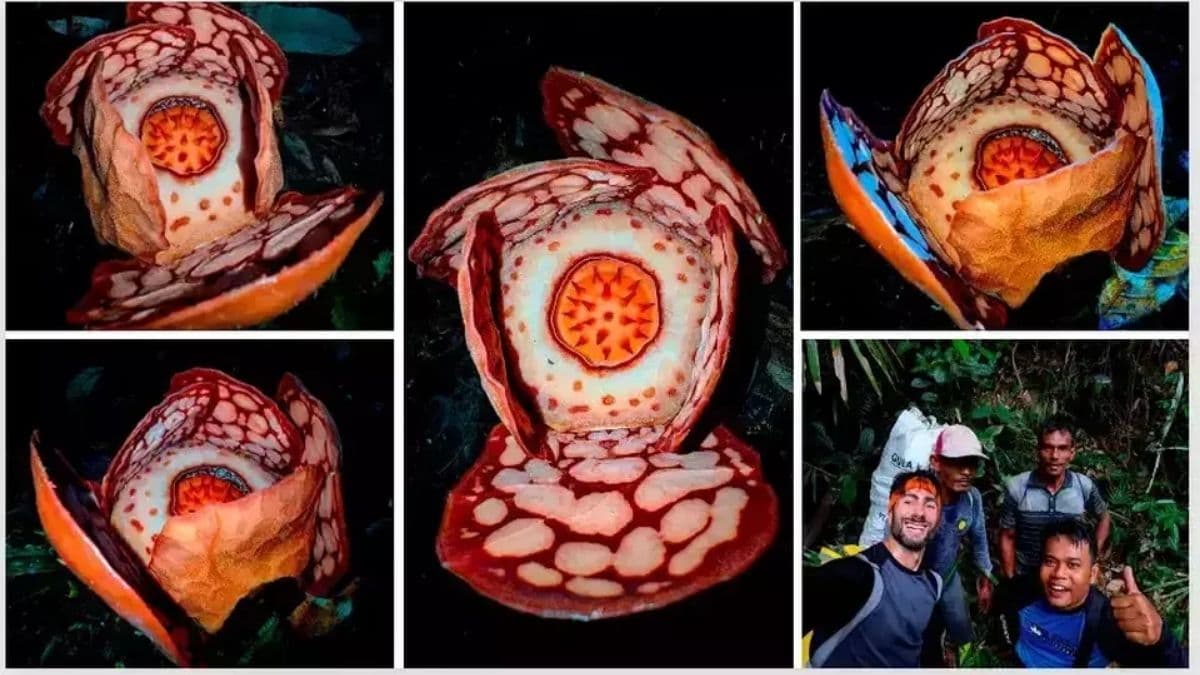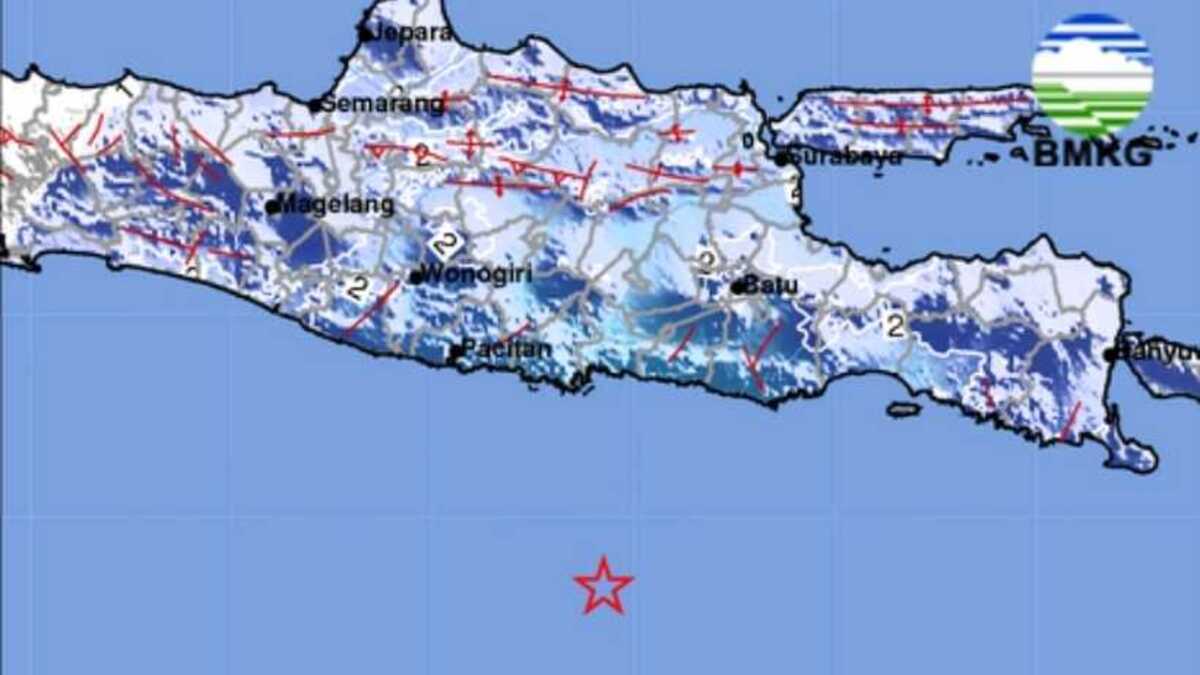World’s largest flower spotted in Sumatra: “seen more by tigers than humans”
A collaborative research effort in Indonesia has confirmed the blooming of the rare Rafflesia hasseltii in West Sumatra. The discovery supports a major regional phylogenetic study and highlights the crucial role of local communities in protecting endangered flora. Public discussion also grew after Indonesian researchers’ name were omitted from an Oxford University post about the expedition.

- Collaborative research in Indonesia has confirmed the rare Rafflesia hasseltii blooming in West Sumatra, supporting a regional phylogenetic study.
- The finding underscores the importance of community-based conservation, as many Rafflesia populations lie outside protected zones.
- An omission of Indonesian researchers’ names in an Oxford University post prompted public criticism and renewed calls for recognition.
WEST SUMATRA, INDONESIA — A collaborative research effort supported by Indonesia’s National Research and Innovation Agency (BRIN), the University of Bengkulu, and the Rare Flower Care Community of Bengkulu has confirmed the existence of Rafflesia hasseltii, one of Indonesia’s rarest plant species. The study, titled The First Regional Pan-Phylogeny for Rafflesia, aims to reconstruct the phylogenetic relationships of all known Rafflesia species.
The flower was documented blooming on 18 November 2025, in the forests of West Sumatra, specifically in Hiring Batang Sumi, Sumpur Kudus District, Sijunjung Regency. The finding drew significant attention due to the rarity of Rafflesia hasseltii, which is notoriously difficult to encounter in the wild.
“This activity is part of our efforts to understand the genetic relationship among Rafflesia species in Southeast Asia and ensure their conservation in their habitat,” said Joko Ridho Witono, a researcher at BRIN’s Biosystematics and Evolution Research Center, in a written statement on Monday, 24 November, 2025.
Indonesia Holds Highest Rafflesia Diversity
According to Joko, the research reaffirms Indonesia’s position—alongside the Philippines—as the country with the highest diversity of Rafflesia. Sixteen species of these parasitic giant flowers are currently recorded in Indonesia, with the BRIN team successfully collecting 13 samples for DNA analysis.
The research began in early 2025, with BRIN responsible for collecting and analyzing samples in Indonesia. Malaysia and the Philippines conducted parallel work in their territories. “We ensure that no genetic material leaves Indonesia. All research processes are carried out legally and with permits,” Joko said. The project is funded by the University of Oxford Botanic Garden and Arboretum and BRIN’s RIIM Expedition Program.
Significant Moment in Conservation Efforts
The blooming of Rafflesia hasseltii became one of the most notable findings of the expedition, documented during field surveys across Bengkulu and West Sumatra. In Sijunjung, the team observed the flower in a community-managed conservation area under the Nagari Forest Management Institution.
Joko noted that many Rafflesia populations exist outside protected conservation zones, often on community-owned land or within coffee and oil palm plantations. This condition highlights the importance of community-based conservation. “Without proper education, the existence of Rafflesia could be threatened by human activities,” he said.
Emotional Viral Moment From the Field
An emotional incident during field documentation drew widespread public attention. A member of the Rare Flower Care Community of Bengkulu, Septian Andriki, was captured in a viral video shedding tears after witnessing the blooming Rafflesia hasseltii—a moment he described as the culmination of a 13-year search.
The video brought increased visibility to conservation efforts and highlighted the role of local communities in protecting rare flora.
Oxford Post Omits Indonesian Researchers’ Names
Oxford University did not mention Indonesian researchers when announcing the discovery of Rafflesia hasseltii.
In its post on X, the university stated: “Rafflesia hasseltii: A plant seen more by tigers than people Yesterday, Oxford Botanic Garden’s @thorogoodchris1 was part of a team that trekked day and night through tiger-patrolled Sumatran (an island in Indonesia) rainforests to find Rafflesia hasseltii.”
The post highlighted Oxford biologist Chris Thorogood but did not include the names of Indonesian researchers involved in the expedition. The omission prompted responses from Indonesian netizens, including former Jakarta Governor Anies Baswedan, who wrote:
“Dear @UniofOxford, our Indonesian researchers — Joko Witono, Septi Andriki, and Iswandi — are not NPCs. Name them too.”
Genome Mapping and Research Challenges
The study uses a whole genome sequencing (WGS) approach to map the Rafflesia genome, a method that Joko said could lead to the identification of new species in Indonesia. Unlike previous research that examined 500–1,500 base-pair gene fragments, the current project maps millions of base pairs to form a more complete genomic picture.
Field challenges remain considerable. As a holoparasitic plant, Rafflesia blooms for only a few days, and many species grow in remote forests. “Finding Rafflesia in a blooming or bud form is not easy. Accurate information from the local community is needed to ensure the research is not in vain,” Joko said.
BRIN plans to draft a policy paper at the end of the study to provide recommendations for Indonesia’s national Rafflesia conservation strategy. “As a scientific authority, BRIN is responsible for providing a scientific basis for Indonesia's biodiversity preservation policies,” he added.
Profile of Rafflesia hasseltii
Rafflesia hasseltii, known locally as cendawan matahari, was first described in 1879 by botanist Willem Frederik Reinier Suringar. The species is also called Cendawan Muka Rimau and Rafflesia Merah Putih due to its reddish-brown petals with large white patches. The flower is protected under Government Regulation No. 7/1999 and is listed as endangered by the IUCN.
It can reach 30–50 cm in diameter and parasitizes the vine Tetrastigma leucostaphyllum. Its distribution spans the Malay Peninsula, Sarawak, and Sumatra, though in Sumatra it is restricted to limited areas such as Bukit Tigapuluh National Park, Riau, Jambi, and Kerinci Seblat. Of the 25 known Rafflesia species worldwide, 14 are found in Indonesia. The Community for the Conservation and Research of Rafflesia (CCRR) estimates that around 60 percent of Rafflesia species face severe extinction risk, with 67 percent of their habitats located outside protected areas.







0 Comments